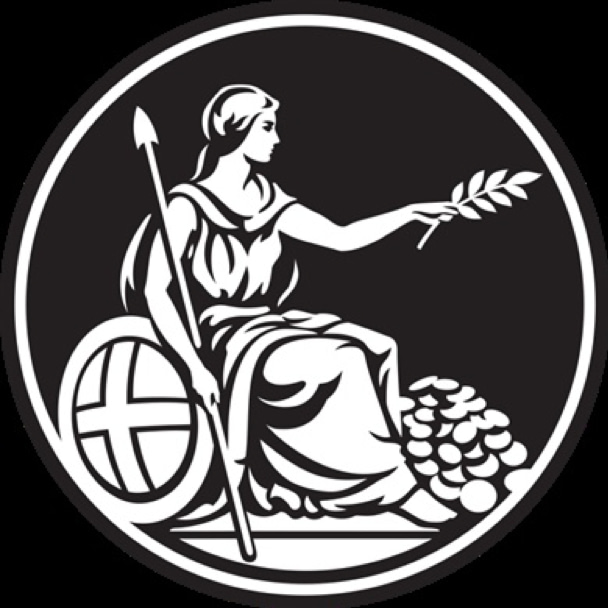Recently I visited the Bank of England Museum, which is located in Bartholomew Lane directly within the Bank of England. It’s well worth a visit to learn more about the bank’s origins, its architectural history, the history of the ‘bank note’ and why JMW Turner has been chosen for the new polymer £20 that came out this month.
However, what interested me even more was seeing the first ‘banking seal’ logo selected by the directors in 1694, showing “Britannia sitting and looking at a Bank of mony”:

“There is no record as to why this choice was made, but it was probably inspired by the design then current on the reverse of the halfpenny and farthing.”
The figure of Britannia quickly became identified with the Bank of England and was used for other purposes, the most important of which was as a device on bank notes. Every printed note issued by the Bank of England has since carried an image of Britannia.
What’s so interesting about the logo is that it is still in use today – some 325 years later. Yes, it has evolved, and a brand identity system developed, but the logo bearing Britannia is as relevant today as back in 1694 – so why is this?

In my view it is due to the values that the Bank of England represents and the bank’s objectives.
The logo represents: Britain, strength, peace and prosperity.
Looking at the logo in more detail, we observe:
· The figure of Britannia, representing Britain since Roman times
· Britannia holding an olive branch in her left hand, symbolising peace
· In her right hand she’s holding a spear, meaning strength
· And she looks at a pile of coins representing prosperity
· The shield displaying the flag of England

So, it seems my short visit to the Bank of England Museum was surprisingly aligned to the focus of my whole career. That is, to educate leaders of business in the importance of having meaningful and purposeful brand values and creating brand identities that represent these values. This will help to build an enduring brand identity.
For the interested
Two other interesting facts about Britannia’s appearance on notes and coins:
On some bank notes the coins were transformed into a straw beehive, known as skep. It was a positive symbol for the bank to adopt, since bees are a heraldic symbol for industry and cooperation.
The Story of Britannia on Coins … it is believed that Queen Anne ordered the design to be changed in 1702, because she objected to the bare leg which Britannia was showing.
Sources: The Bank of England Museum: https://www.bankofengland.co.uk/museum




Leave a Reply
You must be logged in to post a comment.